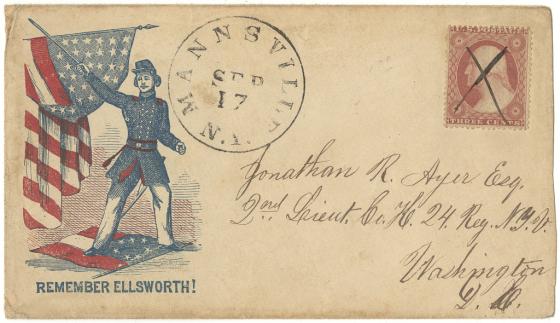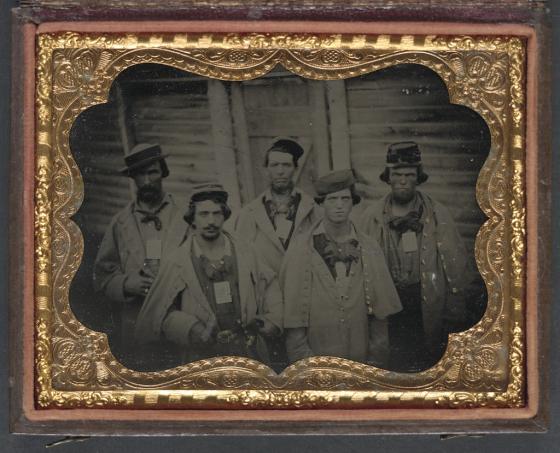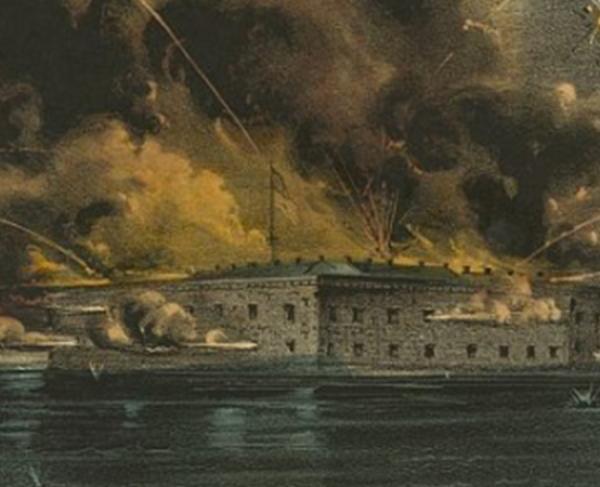
The city of Chicago, Illinois, played an important role in the Civil War, and conversely, the war had an immeasurable impact on the city's development. Learn more about Chicago during the war with these ten facts.
Fact #1: More than 22,000 men from Cook County - two-thirds of them from Chicago - served in the Union Army during the Civil War.
Union support ran high in Chicago and its surrounding county. The state of Illinois is known for the large number of soldiers it supplied to the Union Army. Enthusiasm for the war in Chicago ran so high that the draft was seldom used; enlistment rallies and large bounties further encouraged men to volunteer. However, Chicago would also pay a high price for its ardent support of the war. More than 4,000 men from the city were killed during the course of the war.
Fact #2: Among those from Chicago that served was one of the first Union officers killed during the war.
Colonel Elmer Ephraim Ellsworth of the 11th New York Volunteers, also known as the First Fire Zouaves, has the conspicuous distinction of being one of the first Union officers killed in the war. Ellsworth had worked as a lawyer under Abraham Lincoln in Chicago and became his friend. After Lincoln was elected to the presidency, Ellsworth followed him to Washington. He then traveled to New York to raise the 11th New York Volunteers, which consisted of many of the city’s volunteer firemen. On May 24, 1861, Ellsworth and his men entered the city of Alexandria, Virginia. There, Ellsworth and four of his men approached the Marshall House Inn, which was flying a large Confederate flag. As Ellsworth took down the flag, the innkeeper James Jackson fired at Ellsworth with a shotgun and instantly killed him. Upon hearing about his friend’s death, Lincoln reportedly cried “My boy! My boy! Was it necessary this sacrifice should be made?” Ellsworth’s body laid in state in the White House before returning to New York. Subsequently, Ellsworth became a martyr for the Union cause. “Remember Ellsworth!” became an oft-repeated slogan and the 44th New York Volunteer Infantry Regiment even called themselves the “Ellsworth Avengers.”

Fact #3: The Civil War helped Chicago to become a center of industry and commerce.
In the first two years of the war, Chicago’s urban rivals of St. Louis, MO, and Cincinnati, OH, were located too close to the front lines and were hurt by the blocking of trade on the Mississippi and Ohio Rivers as a result. Thus, Chicago, with its central location and rail and road transportation links, emerged as the center for meatpacking, wheat distribution, lumber, and other industries. It sent a large supply of arms and foodstuffs to the Union Army, becoming the second largest supplier, only trailing New York City.
Fact #4: The war also helped Chicago to become a center of banking.
Stable banking was brought to Chicago for the first time during the Civil War. The First National Bank of Chicago was founded in July of 1863. By 1865, the city had more than a dozen national banks, which was more than any other city in America. The capital accumulated by these banks made the city’s further industrialization in the latter half of the 19th century possible.
Fact #5: Union sentiment ran high throughout Chicago, bolstered by a small but vocal abolitionist population.
Chicago had a reputation for being a hotbed of abolitionist activity. Chicagoan abolitionists ranged from former slaves to evangelicals from the Northeast. African American abolitionists were threatened with reprisal for their actions, but still played an active part in the city’s Underground Railroad. Before his 1859 raid on Harpers Ferry, John Brown and his band of abolitionists stopped at the house of John Jones, a wealthy free black tailor and abolitionist. Organizations such as the Chicago Anti-Slavery Society and the Chicago Female Anti-Slavery Society worked alongside religious abolitionist groups to oppose slavery. Several Chicago churches even sent a delegation to Lincoln in 1862 to demand an emancipation policy. Many considered the city the springboard for Lincoln’s political career – and some circles even blamed the city itself for causing the war. The Chicago Tribune was an abolitionist newspaper that rose to prominence prior to the war and became one of the leading Republican papers of the day.
Fact #6: Despite strong Union support, Chicago experienced significant tensions during the war.
The Democratic Chicago Times newspaper was perhaps the country’s most vocal critic of the war. In June 1863, the paper was forcefully shut down by the Union Army. However, this didn’t last long, when Democratic supporters threatened to attack the Chicago Tribune, the Times’ Republican rival, President Lincoln ordered the Union Army to cease suppressing the paper. Tensions didn’t subside and only grew; during the election of 1864, Republicans accused Democrats of conspiring with Confederate spies to free Southern prisoners at the prisoner of war camp at Camp Douglas to disrupt the election. Furthermore, in 1862, a race riot rocked the city after white teamsters prevented African Americans from using the omnibus system, resulting in the City Council voting to segregate public schools.
Fact #7: The well-known Union song "Battle Cry of Freedom" originated in Chicago.
George F. Root, composer and lyricist of perhaps the most popular Northern Civil War-era song, was born in Massachusetts but moved to Chicago, where he founded the publishing firm Root and Cady. Composed in a single day in response to President Lincoln’s second call for troops in July 1862, “Battle Cry of Freedom” was first performed on July 24 at a huge war rally in the city. The Northern public’s response to the song was overwhelming; sheet music of the song was so in demand that printing presses couldn’t keep up. Root recalled that he was thankful that if he “could not shoulder a musket in defense of my country I could serve her in this way.” The popularity of the song led to multiple imitations, including a Confederate version of the lyrics adapted to the same melody. Root also composed other popular wartime songs such as “Just Before the Battle, Mother” and “Tramp! Tramp! Tramp!”

Fact #8: Many formerly enslaved refugees fled to Chicago throughout the war.
As a result of its prominent and vocal abolitionist community, Chicago gained the reputation of being a Republican, pro-Lincoln stronghold. During the war, the city saw about 20 African American refugees of slavery arriving per day. From 1860 to 1870, the city’s Black population grew by more than 600%. Despite opposition, such as the aforementioned race riots and impoverished conditions, black Chicagoans had an improved social status during and after the war, and a black professional class emerged. A vibrant African American community took shape, with churches especially growing during the war.
Fact #9: Women in Chicago played a large role in improving the sanitary conditions of Union soldiers at the front.
The United States Sanitary Commission, established to improve the conditions of sick and wounded Federal soldiers, had its northwestern branch headquarters in Chicago, and prominent women such as Mary Livermore and Jane Hoge organized huge fairs in 1863 and 1865 to garner support for the Commission. At the elaborately decorated fairs, citizens donated items that were then sold to buy medical supplies and other items for Union troops at the front. The 1863 fair was so successful that it was replicated throughout the North.
Fact #10: Chicago was the site of one of the largest prisoner-of-war camps in the North, Camp Douglas.
In 1861, Camp Douglas was founded as a training camp for Union forces and named for Illinois Senator Stephen A. Douglas, on whose property the site was located. In 1862, the site quickly was adapted to become a prison for the many Confederate soldiers captured by General Ulysses S. Grant at Fort Donelson. For a time, Camp Douglas was the largest Union prison. Throughout the war, more than 26,000 men were incarcerated in Camp Douglas. Escapes were quite common, and during the election of 1864, federal authorities foiled an attempt to break out prisoners to disrupt voting. Not unlike other Civil War prisoner-of-war camps, Camp Douglas had a high mortality rate, where one in seven prisoners perished. Its poor sanitation, poorly constructed buildings, and severe weather were to blame.


